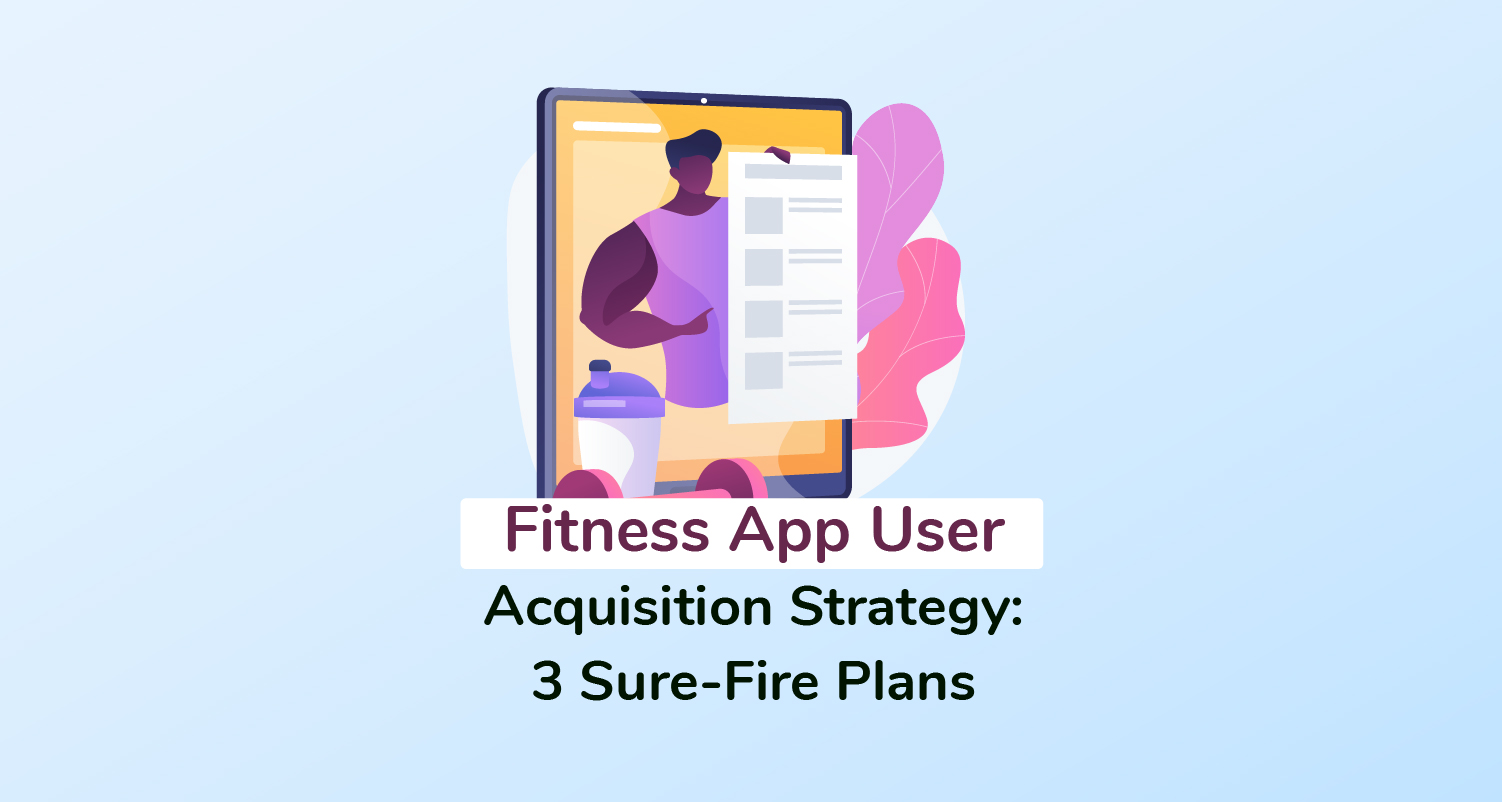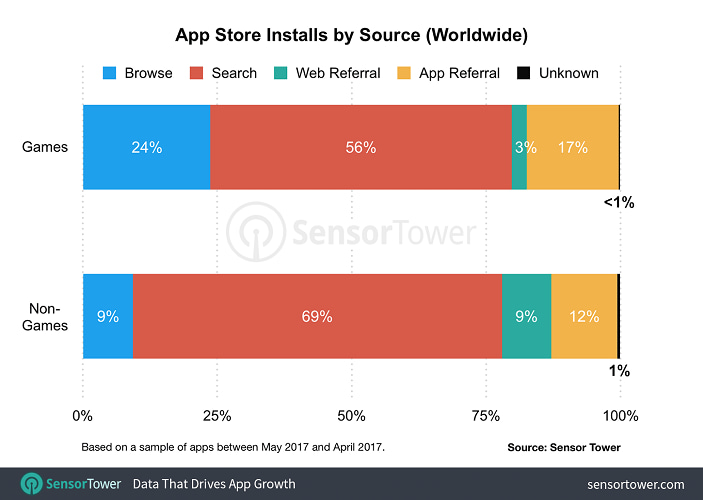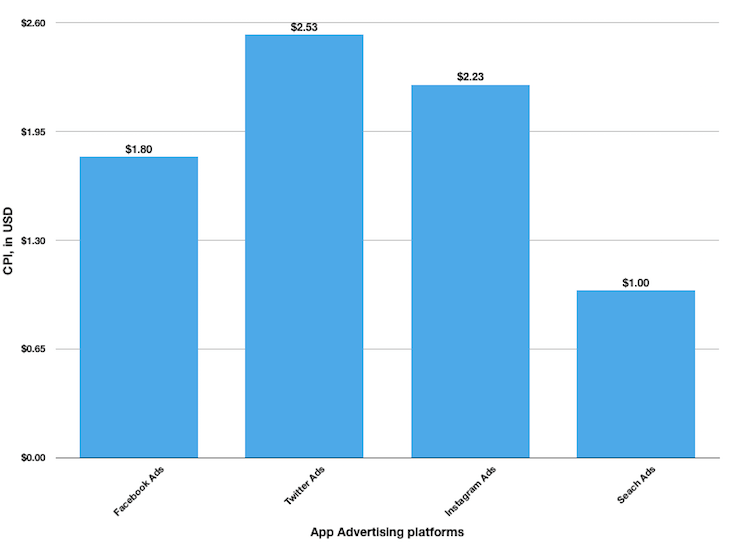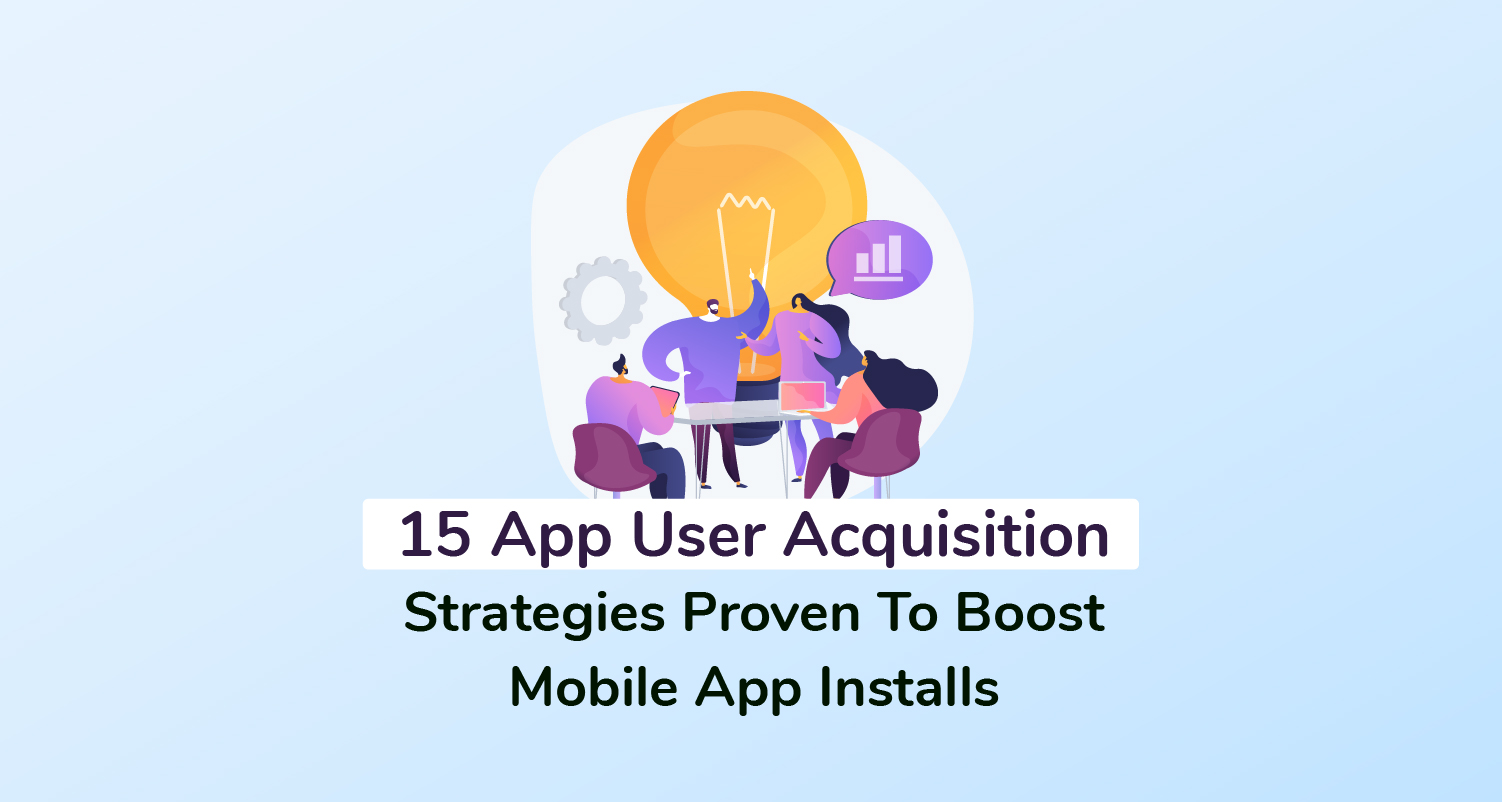
Fitness App Marketing: 3 Sure-Fire Plans to Follow for User Acquisition

When you Google the term “Fitness App Marketing,” hundreds of strategies, tactics, and temporary growth hacks pop up into your search results. It’s almost like every fitness app developer and marketer has discovered the secret to increasing app user acquisition and “guarantees” instant results.
Now, there is certainly plenty of sound advice out there from people who have successfully marketed their own workout and fitness apps. But just because a user acquisition strategy worked for them does not necessarily mean it will work for you.
So, which mobile app marketing strategy will take your fitness app to the next level? Or rather, what exactly should you focus your attention and resources on to achieve your goals?
Well, I’m going to let you in on a little secret:
While there’s a wide range of potentially effective methods that you could include in your user acquisition strategy, many of the top mobile apps on the global fitness app market boil their fitness app marketing initiatives down into three categories.
Here at PreApps, we call these mobile app marketing categories the User Acquisition Machine. I’m going to share how you can use the User Acquisition Machine to attract high-value users to your fitness app – all at an affordable cost.
This article basically explains:
- How to push your fitness app to the top of the App Store through organic mobile user acquisition.
- How to complement your organic user acquisition strategy with paid ads.
- How to use your existing fitness app users to win over new users.
But before we dig into more about fitness app marketing strategies, I want to tell you a story.
My Recent Experience With A Successful Fitness App
I was recently consulting with a multi-billion-dollar mobile app in the fitness category at our agency. On our last call, they shared what was working well with their mobile fitness app marketing efforts, what they needed help with, and what their focus point was for this year.
When going through their current initiatives, it was clear why certain things were working well and why others were not. Since they had already implemented the fundamental app marketing initiatives, we were able to make little tweaks in the accompanying user acquisition strategies, which led to massive results.
Out of the dozens of user acquisition strategies this billion-dollar fitness app was using, they can all be summed up into three categories.
You see, it doesn’t matter if your fitness app has 0 downloads or over a billion downloads. Ultimately, there are three ways to acquire new users to fitness apps.
It’s my goal that with these three plans, you will simplify the way you think about app marketing strategy and how to get more downloads and users to your fitness app at an affordable cost.
So, let’s jump in!
3 Ultimate Plans For Driving Fitness App User Acquisition
#1: Organic Customer Acquisition
The organic user acquisition method involves every channel in which users naturally discover fitness apps and download them.
And speaking of which, here’s something that you may not know. As it turns out, a majority of all app downloads in the world don’t come from Facebook ads, Google Ads, and likes. Even word of mouth lags behind in the app discovery chart.
Overall, it’s actually organic app downloads that typically make up the majority of all user acquisitions. In fact, it is estimated that 69% of App Store downloads come from organic searches alone!

And what does this mean for fitness apps?
Well, here’s the thing about organic downloads. You can’t really “buy” or control them – for instance, you can’t say “I want 1 million organic downloads next month, and then pay “x” amount to get it through Facebook ads.”
Organic customer acquisition is something that you have to work towards. And this is best done through App Store Optimization, app press releases, viral video marketing, and getting your app featured by apple.
Believe it or not, Apple has reported that the App Store alone gets over 500 million weekly visitors worldwide. That’s 2 billion visitors per month who can potentially download your fitness app. Isn’t that amazing?
Getting in front of these fitness apps users and having your app ranked at the top of the App Store search results isn’t easy. It takes hard work.
Some of the best ways to improve your app store optimization strategies for organic searches include:
- Creating a unique but easily searchable name.
- Incorporating keywords into your name and app description.
- Showcasing quality screenshots or videos of your app.
- Offering multiple language options.
- Encouraging users to leave reviews.
This app marketing strategy helps to make your App Store page more “searchable” – even if the mobile users are not looking for your app specifically.
#2: Paid Traffic
This is the traffic that you can directly control and scale very quickly. And to be specific, this app user acquisition method includes Facebook ads, influencer marketing, programmatic ads, YouTube ads, plus any other acquisition channels that have a cost per download program.
In case you’re wondering, the answer is yes. Even the top fitness apps tend to use this method to win over new app users. You’ll find these fitness apps advertising their app features on social media from time to time.
The only problem is, implementing this type of app marketing strategy can be expensive. On average, it costs about $2.20 per download here in the United States to advertise on social media accounts like Facebook, Twitter, or Instagram.

So, if you’re targeting 100,000 mobile app downloads, it will cost you an average of $180,000 to get them through Facebook ads. Then on Twitter or Instagram, the customer acquisition cost for fitness apps goes even higher – both social media platforms will charge you over $200,000.
Now, when you take all that into consideration, you’d be much better off focusing your initial resources on Apple Search Ads, and Good Search UAC – instead of just social media paid advertising for fitness apps.
The reason why we recommend running Apple Search Ads or Google Search UAC instead of Facebook, Instagram, Twitter, or other types of social media is, it turns out that the more that you spend on Apple Search Ads, the more your organic growth will increase directly on the App Store. All thanks to the fact that Apple happens to own and manage both Apple Search ads and the App Store itself.
In contrast, social media ads for fitness apps are a one-to-one exchange. You only get one download when you spend $2 or so, while Apple Search Ads gives you the chance to generate more mobile app downloads at half the cost.
As far as fitness app marketing strategy is concerned, the ultimate goal here is to turn the traffic you can control and pay for into traffic you own.
#3: Leveraging Your Existing Users
Leveraging your existing fitness app users involves using your own user base of people who have already downloaded your mobile app. You could also mix that up with people in your email list, as well as users on any other mobile app that you own.
The underlying principle here is, consumers tend to rely heavily on other people’s opinions when it comes to making purchases. A survey by Harris Interactive, for instance, established that 71% of consumers are heavily influenced by reviews from family and friends when making buying decisions. This applies to fitness apps too.
So, if they hear about your fitness app through word of mouth, or they happen to be caught up in a buzz about it online, they will be inclined to check it out.
That’s partly how the likes of Uber, Instagram, and Spotify’s managed to grow exponentially in their early years. Although they are not in the fitness app market category, you could borrow a leaf from them to promote your workout app.
Consider, for instance, in 2011, when Uber’s co-founder Travis Kalanickback stated that 95% of their riders had heard about Uber from other Uber riders. For every seven rides completed, an Uber rider referred a new app user.
Think about that for a second. You could say Uber pretty much grew by repeatedly maximizing the potential of early users. Imagine if you could do that with your own fitness app users?
Well, you certainly can – but you may need to incentivize them to do so. Few people will share reviews or refer other users without receiving something in return.
You have probably noticed that quite a number of fitness apps use this approach to build an effective referral program. Users are typically given a unique promotion code – via email or push notifications – which is then shared with new users to earn a reward – such as gym loyalty points.
It doesn’t stop there, though. Some fitness apps manage to increase brand awareness by allowing users to share their fitness achievements with their friends via social media. They manage, for example, to publish workout stats from wearable devices to their Twitter and Facebook feeds.
Key Takeaways
- The right kind of fitness app marketing matters. There are three components to the mobile app user acquisition machine that work together to attract users to your fitness app.
- 69% of all mobile app downloads come from organic customers through search features on the App Store platform.
- To increase your organic users, you must optimize your App Store page by incorporating keywords, images, and reviews.
- Fitness apps can control paid traffic by investing in in-app marketing – but you should be picky about which channels and social media platforms you utilize to run the ads.
- Leverage your current mobile app users to attract new customers through various incentives.
Your Next Steps
The main point is, if you want to be successful and reach millions of downloads, your fitness app marketing channels can be boiled down to these three sources. As such, I strongly encourage you to review your current fitness app marketing campaigns, and subsequently, determine which of these three pieces of the app user acquisition machine might be missing.
In other words, where are the majority of your mobile app downloads coming from now? Is it organic, from App Store Optimization geared for fitness apps? Paid traffic through Facebook ads or referrals from word of mouth from existing users?
Think about where you need to focus your time and resources for your fitness app to be found.
Now, I bet some of you listening right now are thinking, “Wow, this is a lot to manage!”
Well, it is. Mobile app marketing can be incredibly overwhelming, especially when you already have a lot on your plate in terms of running your business, fitness app development, etc.
Luckily, you don’t need to do it all on your own.
In fact, you’re not meant to. You can only be as successful as the team of experts you surround yourself with. PreApps is a marketing agency that works exclusively with app owners to help them improve their customer acquisition strategy through better mobile app marketing.
Contact us to receive a free consultation to discuss an app growth marketing strategy designed specifically for your business and mobile application.
Bonus
If you have fitness apps currently in the App Store or Google Play, I have something for you. Our team created very special software that I’d like to give you access to for free.
We have created a special tool that tracks over 2M data points on the App Store and will grade your fitness app marketing performance.
You simply enter your app name and let our tool do the rest.
If you want access to this special software tool, head on over to AppReport.PreApps.com to discover ways to increase your user acquisition numbers and grow your app!
We’re here to help you choose the correct user acquisition strategy for your fitness app. Feel free to reach out to us anytime you want.
Newsletter
Don’t miss a thing! Sign up to receive daily news
Subscribe Newsletter







